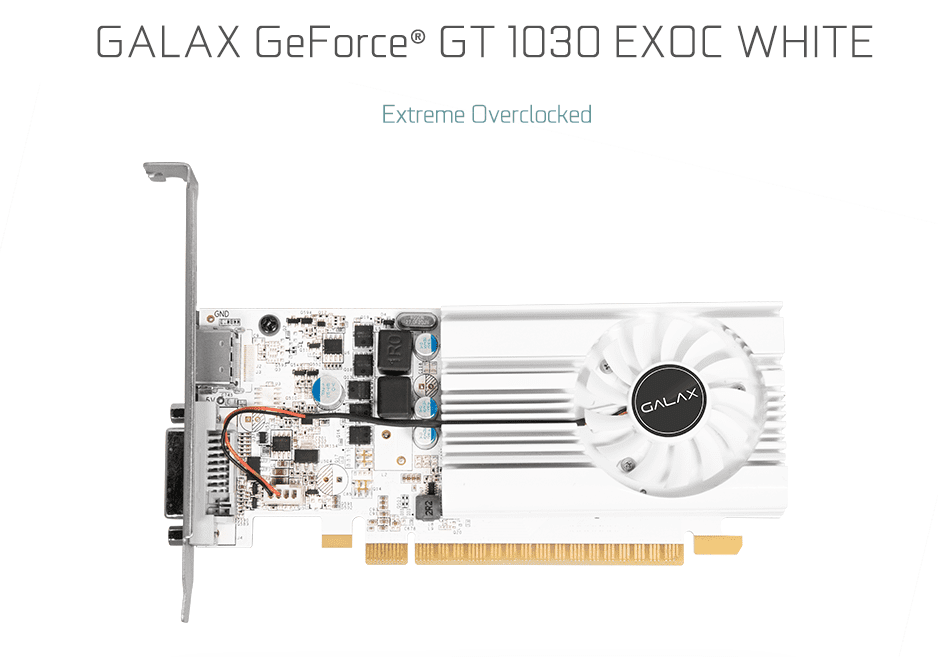Galax GeForce GT 1030 EXOC Extreme Review 2017
For the GT 1030 in NVIDIA’s 14nm-architecture Pascal family, we can call it the cheapest card that offers the up-to-date technology. Of course, the card in your hand is not a card that is recommended to players directly. The GT 1030, which is mostly dealing with office software, running graphics programs but can be recommended for non-gamers as well, is a good update for the integrated graphics processor.

The Galax GeForce GT 1030 is a card in very small sizes. It occupies a single slot with a compact size, looks nice with its white-coloured body and the tiny fan on it. The card, which does not have any power input on it, has HDMI and DVI ports among its connections. The HDMI port here is 2.0b standard. So you can get the image in 4K resolution.
As soon as we mention the technical infrastructure of the card, we can start with the 380 CUDA core in the GT 1030. The card, which offers a standard clock speed of 1252 MHz, has an increased clock speed of 1506 MHz. The card uses GDDR5 memories with a capacity of 2 GB and provides a 64-bit memory interface width. The GT 1030 also offers 3000 MHz with memory clock speed. The recommended power supply for the card is 300 watts, while the card’s thermal dissipation is shown as 30 watts.
Providing Vulkan API support is an important advantage. OpenGL and DirectX 12 support are also available on the GT 1030. However, if you are looking for VR, Ansel and G-Sync support you will not find them on this card, of course. Let’s say that it supports GeForce Experience.
As a result, the GT 1030 is a graphics card that you can see as a good alternative to the integrated graphics processor, as we have said throughout the review.
